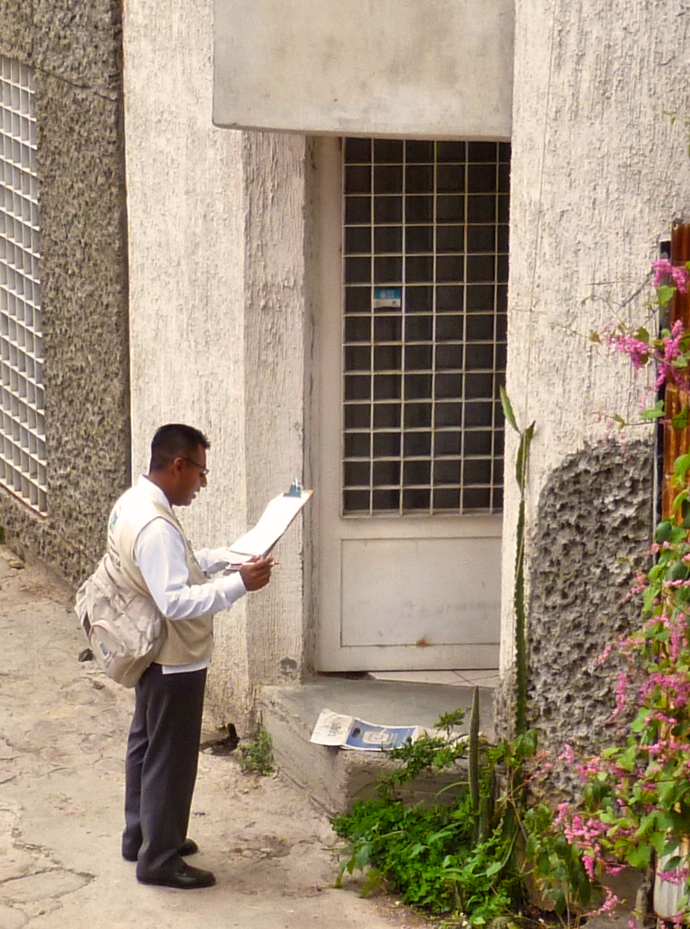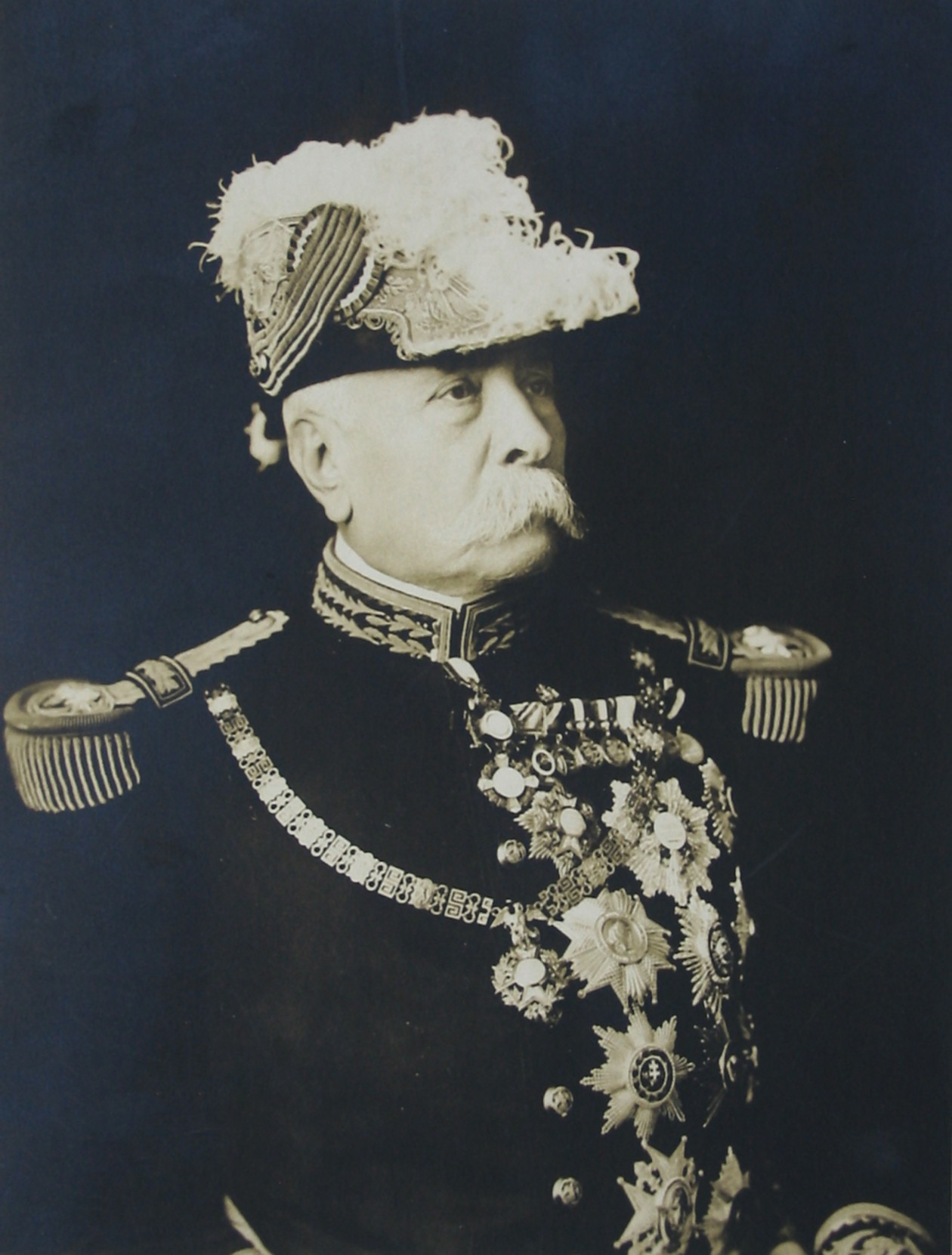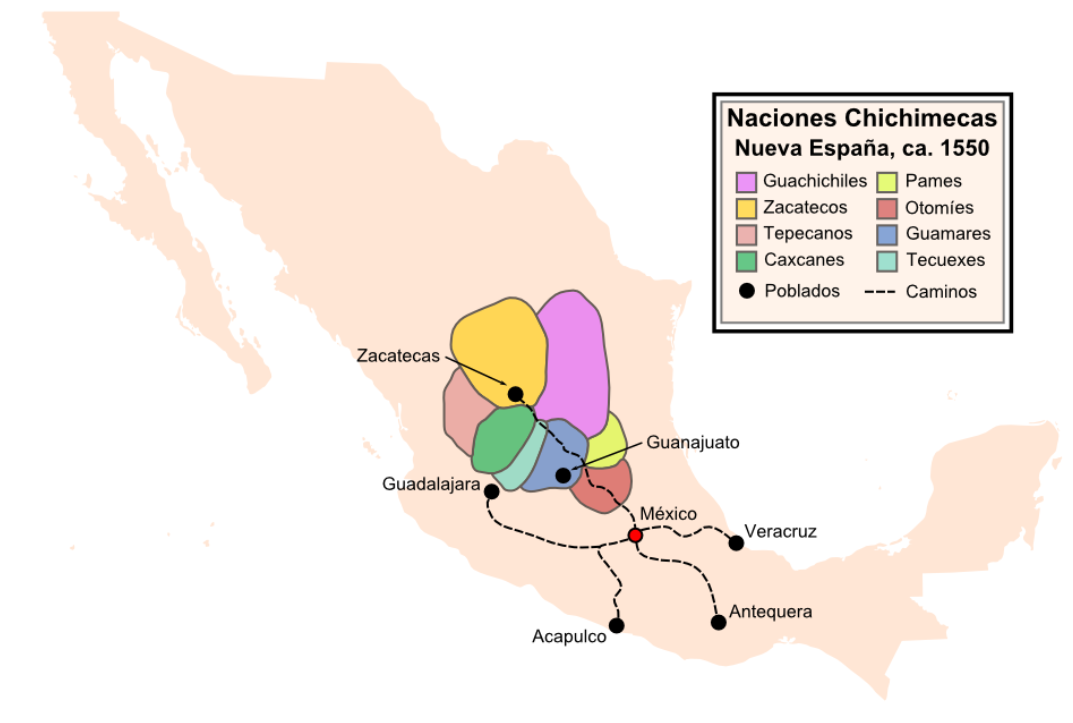|
General Francisco R. Murguía Municipality
General Francisco R. Murguía is a municipality in the Mexican state of Zacatecas, located approximately north of the state capital of Zacatecas City. Its municipal seat is located in Nieves. Geography The municipality of Francisco R. Murguía is located at an elevation between on the Mexican Plateau in northern Zacatecas. It borders the Zacatecan municipalities of Mazapil to the northeast, Villa de Cos to the southeast, Río Grande to the southwest, and Juan Aldama to the west. It also borders three municipalities of Durango to the north and northwest: Santa Clara, General Simón Bolívar, and San Juan de Guadalupe. The municipality covers an area of and comprises 6.6% of the state's area. As of 2009, the land cover in Francisco R. Murguía comprises matorral (53%), grassland (24%), and mezquital (2%). Another 21% of the land is used for agriculture. The municipality lies in the endorheic basin of the Aguanaval River, which flows south to north through the municipality. Th ... [...More Info...] [...Related Items...] OR: [Wikipedia] [Google] [Baidu] |
Municipalities Of Mexico
Municipalities () are the administrative divisions under the List of states of Mexico, states of Mexico according to the Constitution of Mexico, constitution. Municipalities are considered as the second-level administrative divisions by the Federal government of Mexico, federal government. However, some state regulations have designed intrastate regions to administer their own municipalities. Municipalities are further divided into Localities of Mexico, localities in the structural hierarchy of administrative divisions of Mexico. As of December 2024, there are 2,462 municipalities in Mexico. In Mexico, municipalities should not be confused with cities (). Cities are Localities of Mexico, locality-level divisions that are administered by the municipality. Although some List of cities in Mexico, larger cities are consolidated with its own municipality and form a single level of governance. In addition, the 16 Boroughs of Mexico City, boroughs of Mexico City are considered municipali ... [...More Info...] [...Related Items...] OR: [Wikipedia] [Google] [Baidu] |
General Simón Bolívar Municipality
General Simón Bolívar is a municipality in the Mexican state of Durango. The municipal seat lies at General Simón Bolívar. The municipality covers an area of 10,041 km². In 2010, the municipality had a total population of 10,629, up from 9,569 in 2005. In 2010, the town of General Simón Bolívar had a population of 1,321. Other than the town of General Simón Bolívar, the municipality had 54 localities, the largest of which (with 2010 populations in parentheses) were: San José de Zaragoza (1,321) and Ignacio Zaragoza (1,019), classified as rural. See also *Simón Bolívar Simón José Antonio de la Santísima Trinidad Bolívar y Palacios (24July 178317December 1830) was a Venezuelan statesman and military officer who led what are currently the countries of Colombia, Venezuela, Ecuador, Peru, Panama, and Bol ..., the Liberator of South America, after whom these places are named. References Municipalities of Durango {{Durango-geo-stub ... [...More Info...] [...Related Items...] OR: [Wikipedia] [Google] [Baidu] |
INEGI
The National Institute of Statistics and Geography (INEGI from its former name in ) is an autonomous agency of the Government of Mexico, Mexican Government dedicated to coordinate the National System of Statistical and Geographical Information of the country. It was created on January 25, 1983, by presidential decree of Miguel de la Madrid. It is the institution responsible for conducting the Censo General de Población y Vivienda every ten years; as well as the Censo Económico, economic census every five years and the agricultural, livestock and forestry census of the country. The job of gathering statistical information of the Institute includes the monthly gross domestic product, consumer trust surveys and proportion of commercial samples; employment and occupation statistics, domestic and couple violence; as well as many other jobs that are the basis of studies and projections to other governmental institutions. The Institute headquarters are in the Aguascalientes, Aguasc ... [...More Info...] [...Related Items...] OR: [Wikipedia] [Google] [Baidu] |
Mexican Revolution
The Mexican Revolution () was an extended sequence of armed regional conflicts in Mexico from 20 November 1910 to 1 December 1920. It has been called "the defining event of modern Mexican history". It saw the destruction of the Federal Army, its replacement by a Liberation Army of the South, revolutionary army, and the transformation of Mexican culture and Federal government of Mexico, government. The northern Constitutionalists in the Mexican Revolution, Constitutionalist faction prevailed on the battlefield and drafted the present-day Constitution of Mexico, which aimed to create a strong central government. Revolutionary generals held power from 1920 to 1940. The revolutionary conflict was primarily a civil war, but foreign powers, having important economic and strategic interests in Mexico, figured in the outcome of Mexico's power struggles; United States involvement in the Mexican Revolution, the U.S. involvement was particularly high. The conflict led to the deaths of around ... [...More Info...] [...Related Items...] OR: [Wikipedia] [Google] [Baidu] |
Dedication Of The Basilica Of Saint Mary Major
The Dedication of the Basilica of St Mary Major (''In Dedicatione basilicae S. Mariae'') is a feast day in the General Roman Calendar of the Catholic Church, optionally celebrated annually on 5 August with the rank of memorial. In earlier editions of the General Roman Calendar, down to that of 1960, it is called the Dedication of the Basilica of St Mary of the Snows (''In Dedicatione basilicae S. Mariae ad Nives''), a reference to the legendary story about the foundation of the basilica. For the same reason the feast is also known popularly as Our Lady of the Snows. The reference to the legend was removed in the 1969 revision of the General Roman Calendar.''Calendarium Romanum'' (Libreria Editrice Vaticana, 1969), p. 133 History Pope Pius V inserted this feast into the General Roman Calendar in 1568,Calendarium Romanum (Libreria Editrice Vaticana 1969), p. 99 when, in response to the request of the Council of Trent, he reformed the Roman Breviary. Before that, it had been cele ... [...More Info...] [...Related Items...] OR: [Wikipedia] [Google] [Baidu] |
Francisco De Ibarra
Francisco de Ibarra (1539 –June 3, 1575) was a Spanish-Basque explorer, founder of the city of Durango, and governor of the Spanish province of Nueva Vizcaya, in present-day Durango and Chihuahua. Biography Francisco de Ibarra was born about 1534 in Eibar, Gipuzkoa, in the Basque Country of Spain. He went to Mexico as a young man, and upon the recommendation and financing of his uncle, conquistador and wealthy mine owner Diego de Ibarra, Francisco was placed at the head of an expedition to explore northwest from Zacatecas in 1554. The young Ibarra noted silver in the vicinity of present-day Fresnillo, but passed it by. He explored further and founded towns at San Martín and Avino, where the silver mines made him a mine owner in his own right. Ibarra's expedition to Zacatecas was later documented by Spanish historian Baltasar Obregón, who traveled with Ibarra in 1554. In 1562, Ibarra headed another expedition to push farther into northwest Mexico. In particular, h ... [...More Info...] [...Related Items...] OR: [Wikipedia] [Google] [Baidu] |
Chichimeca
Chichimeca () is the name that the Nahua peoples of Mexico generically applied to nomadic and semi-nomadic peoples who were established in present-day Bajío region of Mexico. Chichimeca carried the same meaning as the Roman term "barbarian" that described Germanic tribes. The name, with its pejorative sense, was adopted by the Spanish Empire. In the words of scholar Charlotte M. Gradie, "for the Spanish, the Chichimecas were a wild, nomadic people who lived north of the Valley of Mexico. They had no fixed dwelling places, lived by hunting, wore little clothes and fiercely resisted foreign intrusion into their territory, which happened to contain silver mines the Spanish wished to exploit."Gradie, Charlotte M. "Discovering the Chichimecas" ''Academy of American Franciscan History'', Vol 51, No. 1 (July 1994), p. 68 Gradie noted that Chichimeca was used as a broad and generalizing term by outsiders, writing, " twas used by both Spanish and Nahuatl speakers to refer collectively to ... [...More Info...] [...Related Items...] OR: [Wikipedia] [Google] [Baidu] |
Servicio Meteorológico Nacional (Mexico)
The Servicio Meteorológico Nacional (SMN; "National Meteorological Service") is Mexico's national weather organization. It collects data and issues forecasts, advisories, and warnings for the entire country. History A presidential decree founded El Observatorio Meteorológico y Astrónomico de México (The Meteorological and Astronomical Observatory of Mexico) on February 6, 1877 as part of the Geographic Exploring of the National Territory commission. By 1880, it became an independent agency located at Chapultepec Castle, then encompassing six observatories. In 1901, the Servicio Meteorologia Nacional was formed with 31 sections for each state and 18 independent observatories which reported back to the central office in Tacubaya via telegraph. It joined the World Meteorological Organization in 1947. By 1980, the organization included 72 observatories, of which eight launched weather balloons and radiosondes, and five radars serviced the country. In 1989, it became a subagency ... [...More Info...] [...Related Items...] OR: [Wikipedia] [Google] [Baidu] |
Mexican Geological Survey
The Mexican Geological Survey () is an agency of the Mexican government; its mission includes mapping and mining consultation. History The Mexican Geological Survey originated as the Directing Committee for Mexican Mineral Resource Research, established in 1944, which published bulletins on the exploration of mineral deposits. In 1949, the organization changed its name to the National Research Institute for Mineral Resources, and in 1955 it became the Non-Renewable Natural Resources Council. Twenty years later, in 1975, the agency became known as the Mexican Resources Council. In 2005, the title was modified to its present listing as the Mexican Geological Survey. Regional Offices The agency is divided into seven regional offices. Each office serves one or more states as listed below: * North: Chihuahua * Central-North: Durango, Zacatecas, Aguascalientes, Coahuila * Northwest: Sonora, Baja California * Central-Western: Jalisco, Michoacán, Colima, Guanajuato, Querétaro, Méx ... [...More Info...] [...Related Items...] OR: [Wikipedia] [Google] [Baidu] |
INAFED
The Instituto Nacional para el Federalismo y el Desarrollo Municipal (''National Institute for Federalism and Municipal Development'', better known by the acronym INAFED) is a decentralised agency of the Mexican federal government. It has responsibility for promoting the ideals of federalism Federalism is a mode of government that combines a general level of government (a central or federal government) with a regional level of sub-unit governments (e.g., provinces, State (sub-national), states, Canton (administrative division), ca ... between the several levels of Mexican government, government in Mexico, by acting to coordinate and implement policies, programmes and services that are designed to strengthen inter-governmental relations between the federal and "subsidiary" levels of governance at the States of Mexico, state and municipio (Mexico), municipal levels. The agency comes under the overall responsibility of the Secretaría de Gobernación (SEGOB), the Secretariat o ... [...More Info...] [...Related Items...] OR: [Wikipedia] [Google] [Baidu] |
Aguanaval River
The Aguanaval River is a river located in northcentral Mexico. Geography It originates in the southern Sierra Madre Occidental range of Zacatecas state, and flows generally north through Zacatecas and Durango states to empty into the endorheic Bolsón de Mapimí, in Coahuila state. Use The Aguanaval River water is withdrawn and used extensively for irrigation in the Laguna Region of Durango and Coahuila. See also * List of longest rivers of Mexico *List of rivers of Mexico This is a list of rivers of Mexico, listed from north to south. There are 246 rivers on this list. Alternate names for rivers are given in parentheses. Rivers flowing into the Gulf of Mexico *Rio Grande, Río Bravo, the name of the Rio Grande in ... Rivers of the Sierra Madre Occidental Rivers of Zacatecas Rivers of Durango Rivers of Coahuila {{Mexico-river-stub ... [...More Info...] [...Related Items...] OR: [Wikipedia] [Google] [Baidu] |
Endorheic Basin
An endorheic basin ( ; also endoreic basin and endorreic basin) is a drainage basin that normally retains water and allows no outflow to other external bodies of water (e.g. rivers and oceans); instead, the water drainage flows into permanent and seasonal lakes and swamps that equilibrate through evaporation. Endorheic basins are also called closed basins, terminal basins, and internal drainage systems. Endorheic regions contrast with open lakes (exorheic regions), where surface waters eventually drain into the ocean. In general, water basins with subsurface outflows that lead to the ocean are not considered endorheic; but cryptorheic. Endorheic basins constitute local base levels, defining a limit of the erosion and deposition processes of nearby areas. Endorheic water bodies include the Caspian Sea, which is the world's largest inland body of water. Etymology The term ''endorheic'' derives from the French word , which combines ( 'within') and 'flow'. Endorheic lake ... [...More Info...] [...Related Items...] OR: [Wikipedia] [Google] [Baidu] |





